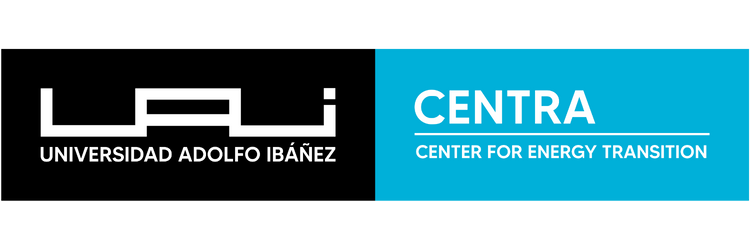Electricity and hydrogen drive the modernization of freight transport
July 28, 2025
Given its extensive geography and complex routes, Chile faces significant challenges in freight transport. To address these complexities and move toward a more sustainable future, the electrification of the sector and the implementation of hydrogen-based technologies are emerging as key solutions.
The National Automotive Association of Chile (ANAC) has highlighted a notable increase in the adoption of electrified trucks. In June, and according to its latest Zero and Low Emission Vehicle Sales Report, 11 new electric trucks were added, bringing the annual total to 48 units and marking a 9.1% increase. Of these, 22 are heavy-duty electric trucks (Class 8), designed for demanding routes and large cargo volumes, while 23 are medium-duty trucks, versatile for various productive and logistics operations nationwide.
Faced with the question of whether Chile is ready to transition from traditional fuel-powered trucks to electric or hydrogen trucks, Luis Gutiérrez, academic and researcher at the Energy Transition Center (CENTRA) of the Faculty of Engineering and Sciences at Universidad Adolfo Ibáñez (UAI), explains: “In Chile, the adoption speed of electromobility varies significantly depending on the sector. Chile is a global leader in electric public transport, second only to China, and we expect two-thirds of the buses in the capital to be electric by early 2026. Far behind is the light vehicle sector, where, for the first time, plug-in vehicles have reached 2.5% of total annual sales. Finally, in the heavy transport sector, of just over 6,000 units sold so far this year, only 37 trucks were electric (0.6%).”
He adds that “there is enough evidence showing that electromobility is not only a more ecological option, but also a more economical one for vehicles that travel several tens of thousands of kilometers per year, such as RED buses and trucks. However, their routes are noticeably different. While urban buses have short loops and predefined operating hours, trucks must travel many more kilometers before returning to the charging base, which is why their adoption is currently limited to urban routes (e.g., deliveries to supermarkets) or short-distance private roads, such as in mining operations, where a few units already exist. The biggest challenge for the mass adoption of electric trucks is, undoubtedly, the lack of adequate charging infrastructure.”
He notes that “the solutions gaining momentum are those based on storage (batteries), which allow charging at a lower rate using the available grid power, enabling trucks to charge when needed without the need for expensive and slow grid reinforcements. However, these systems are still costly.”
The academic states that “it is important to advance public-private efforts to deploy fast-charging infrastructure for on-route trucks, which are different from charging stations for light vehicles due to space and power requirements. So far, efforts in this regard have been almost entirely private. It is also important to consider regulatory aspects that affect the operation of heavy transport companies, such as axle-weight limits on roads, which currently do not have differentiated rules for electric trucks, even though they naturally have more weight on the front axle than their combustion counterparts due to the batteries.”
Regarding the use of artificial intelligence, Gutiérrez explains that “technology plays a very important role in the transition to cleaner transport. Companies will need to determine the necessary charge for their different trucks to complete deliveries, use specialized load management software, monitor the charge status and real-time position of the trucks, diagnose and identify problems in the field, etc.”
On the benefits of incorporating electric and/or hydrogen trucks for drivers, companies, and the environment, Ricardo Burdiles, professor at the School of Engineering, Energy and Technology at AIEP, explains:
For drivers:
• Less exposure to pollutant gases: lower exposure to harmful gases reduces health risks.
• Greater driving comfort: reduced vibration and engine noise make driving more pleasant.
• Less fatigue: due to smoother and quieter vehicle operation.
• Advanced assistance systems: these vehicles feature advanced onboard technology that can facilitate maneuvering and improve safety.
For companies:
• Operational cost savings: this technology allows for reduced energy costs (electricity or hydrogen vs. diesel) and less frequent mechanical maintenance.
• Reduced carbon footprint: improves corporate image and ensures compliance with environmental regulations.
• Greater access to state incentives: such as subsidies, among others.
For the environment:
• Engines produce zero pollutant emissions: no CO₂ or atmospheric pollutants like NOx or particulate matter, which directly benefits the environment.
• Reduced noise pollution: beneficial for urban areas and night transport.
• More efficient energy use: resulting in less energy loss compared to internal combustion engines.
Main differences between this new technology and diesel trucks
Professor Ricardo Burdiles from AIEP analyzes the main differences:
| Characteristic | Electric/Hydrogen Trucks | Diesel Trucks |
|---|---|---|
| Energy source | Electric batteries or hydrogen fuel cells | Internal combustion of diesel |
| Pollutant emissions | Zero direct emissions | High emissions of CO₂, NOx and particulates |
| Noise | Very low | High level of acoustic pollution |
| Maintenance | Less frequent and less complex | Greater number of moving components |
| Operating cost | Lower energy cost (electricity/hydrogen) | Higher fuel cost |
| Range | Currently limited for electric vehicles, medium-high for hydrogen | High range with full fuel load |
| Infrastructure | Requires specific charging or hydrogen stations | Broad network of service stations |

